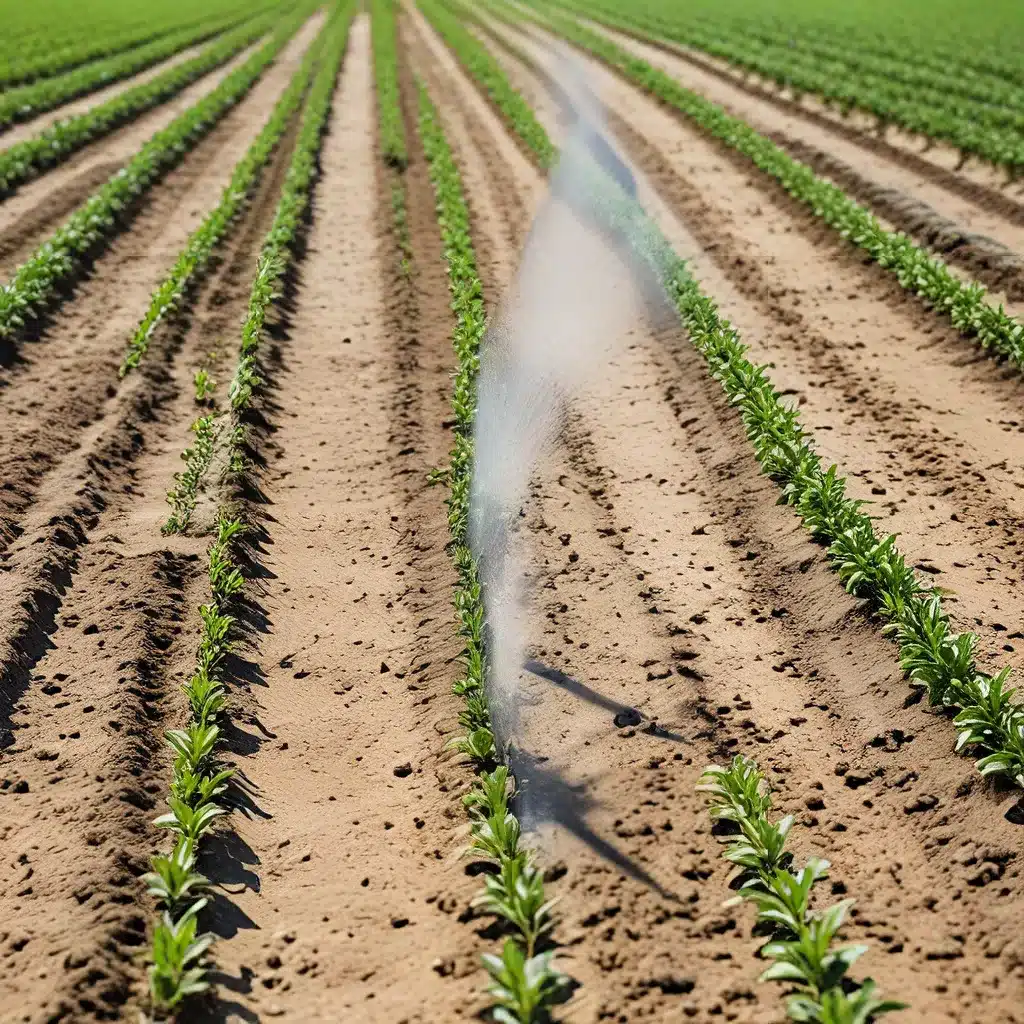
In the era of smart agriculture, the integration of sensor networks and the Internet of Things (IoT) has become a game-changer in the field of precision irrigation. This innovative approach to water management not only helps farmers conserve valuable water resources but also enhances crop yields and reduces the environmental impact of traditional irrigation methods.
Embracing the Sensor Network Revolution
At the heart of this transformation lies the proliferation of sensor networks, which are enabling a new level of granular control and monitoring over agricultural operations. These sensor networks, strategically deployed across fields and orchards, gather real-time data on soil moisture, temperature, precipitation, and other environmental factors, providing farmers with a comprehensive understanding of their land’s unique needs.
By leveraging this data-driven approach, farmers can now precisely tailor their irrigation schedules, applying water only when and where it is needed, rather than relying on broad, inefficient watering patterns. This shift towards precision irrigation not only reduces water consumption but also optimizes the delivery of essential nutrients and minimizes the risk of over-watering, which can lead to soil degradation and nutrient leaching.
Unlocking the Potential of IoT in Smart Agriculture
The integration of IoT technology further enhances the capabilities of sensor networks, enabling seamless data transmission, analysis, and remote control of irrigation systems. Connected sensors transmit real-time data to central monitoring platforms, allowing farmers to monitor and manage their fields from a single interface, regardless of their physical location.
This level of connectivity and automation empowers farmers to make informed, data-driven decisions, automating irrigation schedules based on predicted weather patterns, soil conditions, and crop water requirements. By integrating IoT-enabled smart valves and irrigation controllers, farmers can remotely activate and adjust their watering systems, ensuring optimal water distribution and reducing the labor-intensive nature of traditional irrigation methods.
Addressing the Challenges of Sensor Network Security
As the adoption of sensor networks and IoT in agriculture continues to grow, it is crucial to address the security challenges that arise. The interconnected nature of these systems presents potential vulnerabilities that must be mitigated to protect sensitive data and prevent unauthorized access or manipulation of irrigation systems.
Federal government websites have implemented robust security measures, such as encryption and access control, to safeguard the integrity of their sensor networks and IoT-enabled systems. Additionally, regular software updates and vulnerability assessments are essential to stay ahead of evolving cybersecurity threats.
Farmers and agricultural organizations must prioritize security as a key consideration when deploying sensor-enabled precision irrigation systems, ensuring the confidentiality, integrity, and availability of their critical data and infrastructure.
Optimizing Energy Efficiency in Sensor Networks
Another crucial aspect of sensor-enabled precision irrigation is energy management. The widespread deployment of sensor networks and IoT devices across vast agricultural landscapes can result in significant energy consumption, which can have implications for both operational costs and the environmental impact of smart agriculture.
To address this challenge, researchers and engineers have been exploring innovative energy-efficient design approaches for sensor networks. Strategies such as low-power sensor nodes, energy-harvesting technologies, and dynamic power management algorithms can help optimize the energy consumption of these systems, ensuring a sustainable and cost-effective implementation of precision irrigation.
Secure website connections and energy-efficient sensor network designs are crucial for the widespread adoption and long-term viability of precision irrigation in smart agriculture.
Transforming the Future of Agriculture
The integration of sensor networks and IoT in precision irrigation is a transformative development that is reshaping the future of agriculture. By leveraging the power of data-driven decision-making, farmers can now optimize water usage, enhance crop yields, and reduce the environmental impact of their operations.
As the sensor-networks.org platform continues to evolve, showcasing the latest advancements in this field, the potential for further innovation and adoption of these technologies is truly exciting. The future of smart agriculture holds the promise of a more sustainable, efficient, and productive farming landscape, powered by the remarkable capabilities of sensor networks and IoT.